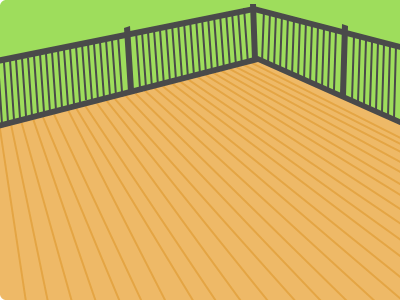
Wood Decks
$8-$75 per sq. ft.
Essentially decking breaks down into the following five categories:
Deciding the type of material you want to go with is a large part in the process of choosing a deck for your home. Skilled deck builders will be able to craft the project out of any material you choose. While there are many specific choices you can make, the main five (technically 7) options are listed below the cost guide (4).
Essentially the square footage for your deck cold cost you:

$8-$75 per sq. ft.
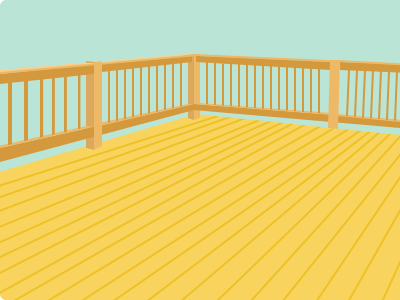
$8-$50 per sq. ft.
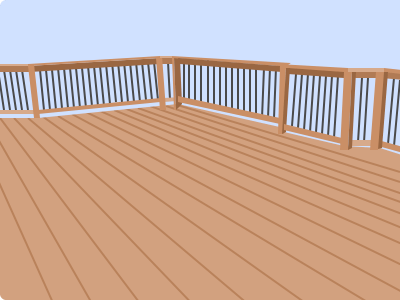
$20-$75 per sq. ft.
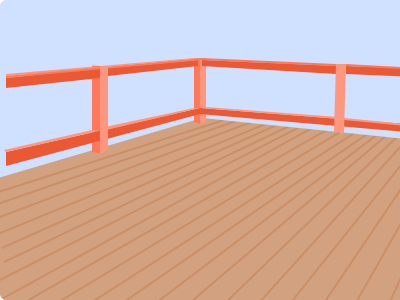
$30-$75 per sq. ft.
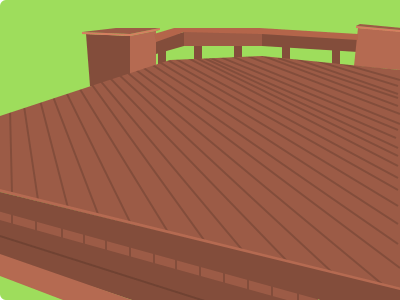
$40-$80 per sq. ft.
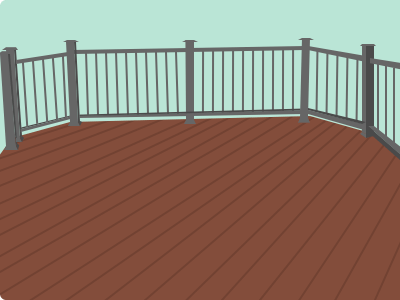
$25-$70 per sq. ft.
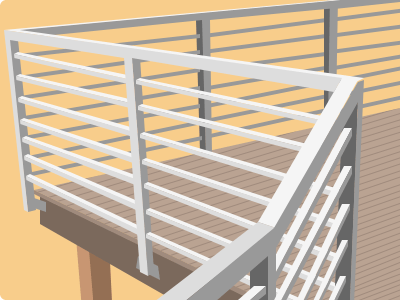
$8-$20 per sq. ft.
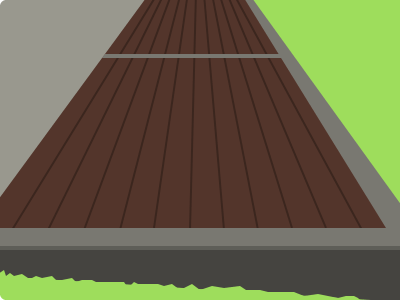
$10-$20 per sq. ft.
This is by far the most economic option. Pressure treated (or PT) lumber is the most viable choice for homeowners, able to be shaped into nearly any design you can imagine. With nearly 75% of all decks being constructed with this material, it's no wonder the lumber is still the no. 1 material in the country (5). Generally this material comes in planks, with a price range of about 2 x 6s (90 cents per linear foot), or 5/4 x 6-in. planks ($1 per linear foot).
Back to topTropical hardwood is tough, long lasting, and worth the hefty price tag (6). These kinds of wood can last well over 25 years for your deck and stand up to any kind of punishment. If you're looking for a secure home feature that will last a lifetime, hardwood decking is the way to go. With that said, tropical hardwoods are fairly expensive, and somewhat difficult to work with, making more elaborate or ornate decks more difficult to construct. But once it's built, it's not coming down. Very general costs for different tropical hardwoods are as follows:
Redwood and cedar are naturally superior to PT lumber. Because a pressure treatment isn't used and therefore the chemicals aren't present, these western softwoods are rich with natural colors and beauty. And while they do naturally resist rot, decay, and invasive insects, a large factor in that is dependent on the quantity of heartwood present. Heartwood is found closer to the core of the tree and much stronger than the outer sapwood of the same tree. Also priced by the plank, a typical 8-ft.-long red cedar 2x6 can cost nearly $4 per linear foot. A lower quality redwood 2x6 could cost about $2.35 per linear foot. Otherwise cedar is renewable, recyclable, and a perfect insulator (7).
Back to topComposite decking is the pinnacle of modern technology making the ideal material. It blends plastic materials and essentially high quality sawdust together to form a material with the strengths of both aspects and the weakness of neither (8). Composite decking is nearly immune against rot and decay, as well as termites.
Back to topAluminum is the long-lasting alternative to wood. While is stands the test of time, is easy to work with, and quite lightweight without compromising durability, it tends to be noisy when stepped on. Also it can become slippery when frozen or if frost settles on the material. Otherwise your aluminum deck will last 15-20 years (9).
Back to topWhile technically also a composite deck, Trex gets its own entry in the guide for its unique blend of (95%) recycled products that go into each construction. It's a completely green material that looks just as good as wood and is completely resistant to mold (10). Trex will protect against fading, scratches, and stains over the course of its lifetime.
Back to topFor most typical homes, contractors recommend a standard size of roughly 15x15 sq. ft. This would run between 300 and 400 sq. ft. total. Also this would normally be wider than it is deep, with the longer section running along the home (11). Low elevation decks work best at mid-ground, with higher decks utilizing multi-layered structures more readily. In any case, you'll want to make sure your deck can easily fit the following:
There are many different places as to where you can choose to have your deck installed. The main factor in deciding the "where" is what you want to use your deck for. Again, professional deck builders can work with you on establishing a location for the project. Consider the following practical uses:
It may sound obvious, but keeping your deck easily accessible makes the unit far more practical. Just because you have the space available doesn't mean you have to utilize all of it. Pool decks are a fine example of this, just be sure to have enough deck to make it to the water. Finding a good ratio of backyard to deck will ensure that both are used and enjoyed.
Back to topCertainly this is more up to the homeowner's taste, as there are innumerable decks and porches that can be designed for your yard (12). It's best to have a style, material, and size picked out beforehand, and then start talking to a contractor who can guide you along the rest of the way. While there are many sites that you can use to browse different deck styles with, certainly one of the most popular is Pinterest. Once all these factors are added together, it's easier to see what an estimate on the price tag could be.
Enter service and
zip code to view
cost breakdown